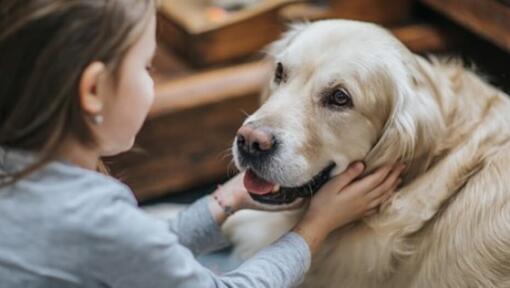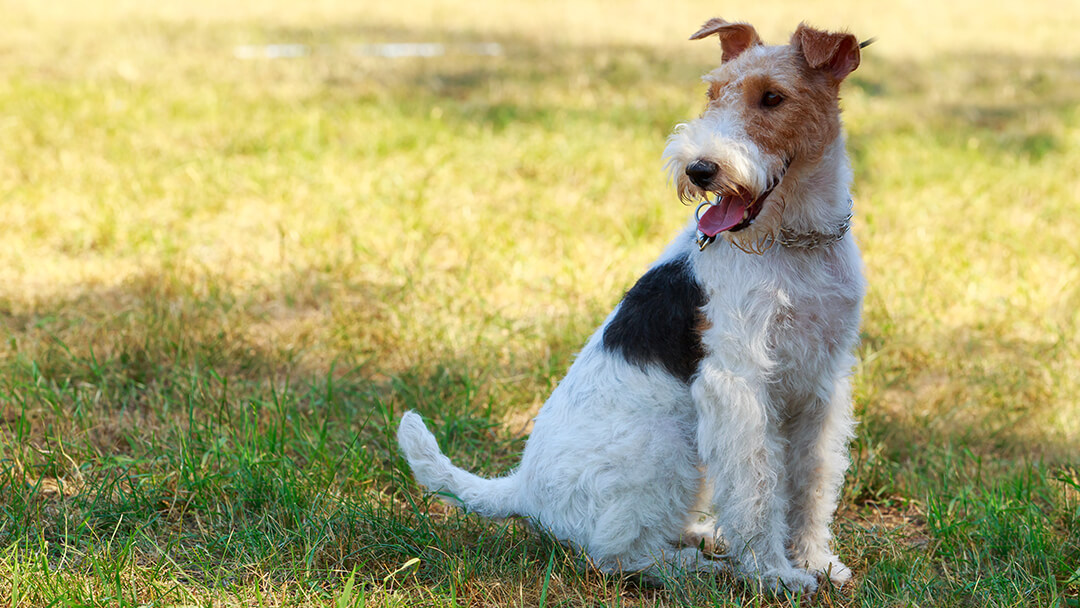
As dogs get older, it can be quite common for them to develop cancer. According to Pets WebMD, more than 50% of dogs aged over 10 years will develop cancer at some point in their lifetime, so it’s important for you to know the signs of this disease and what treatments are available. Find out everything you need to know with our guide.
Just like with people, dogs can suffer from cancer, particularly as they get older. In part, this is because our dogs are living longer as a result of improved veterinary and daily care, but unfortunately, old age still comes its own problems. The good news is that when caught early, cancer is usually very treatable. Knowing what signs of cancer to look out for in dogs and understanding when to seek help from your vet can help you to catch it early.
Sings of cancer in dogs
The signs of cancer in dogs can be extremely varied, in part because there are so many distinct types. It’s almost impossible to make a diagnosis based on symptoms alone, but a few of the most common symptoms of dog tumours are as follows:
- Masses, especially those that are growing.
- Lesions that won’t heal, even after treatment.
- Difficulty going to the toilet (urinating and/or defecating).
- Vomiting and/or diarrhoea.
- Loss of appetite and weight loss.
- Struggling to eat or swallow.
- Lethargy and unwillingness to exercise.
- Stiffness or lameness.
- Difficulty breathing.
- An unpleasant smell.
If your dog is displaying any of the clinical signs listed above, you should take them to a vet promptly. Even if it’s not cancer, it could still be a sign of a health problem that needs treatment.
The most common types of cancer in dogs
It may surprise you to learn that dogs can actually suffer from many of the same cancers as humans. Some types of cancer are influenced by genetics and are more common in certain breeds, but most can affect just about any breed or size of dog.
Haemangiosarcoma
This type of dog tumour affects the endothelial cell linings of blood vessels and is most common in middle-aged or elderly dogs. Breeds including Golden Retrievers and German Shepherds are more predisposed to it.
Lymphoma
Lymphoma is a cancer affecting the lymphatic system. It may first appear in the lymph nodes, usually as swollen glands under the neck, in front of the shoulders, or behind the knee (some of the most accessible lymph nodes in the body). It can also affect lymphatic tissue in other areas of the body including the digestive system. This type of cancer in dogs can cause internal swelling and disease, often causing issues with dogs’ breathing and digestion. Standard Poodles, Golden Retrievers, and Australian Shepherds are the breeds most at risk for this type of cancer.
Mast cell tumours
Mast cell tumours can develop just about anywhere in your dog’s body, but usually appear as a skin lesion. These dog tumours can range in severity from benign to aggressive. Genetics may also be at play with this type of cancer, with Boxer dogs being the most susceptible to it.
Melanoma
This type of cancer in dogs affects the skin, typically developing around the eyes, inside the mouth and sometimes around the foot pads. Melanomas come from pigment-producing cells and so they usually appear as small dark lumps, but they can also appear quite large and flat too. If allowed to spread, they can become exceedingly difficult to surgically remove and so it’s important that these lesions are caught early.
Osteosarcoma
Osteosarcoma is a type of malignant bone cancer most commonly found in large or giant dog breeds. The long bones in dogs’ limbs are particularly affected and the symptoms of this cancer will generally include stiffness, swelling, and pain around the area.
Mammary gland carcinoma
This type of cancer in dogs affects the mammary gland, primarily in female dogs. The good news is that if you get your dog spayed early on, the risk of this cancer developing will be significantly reduced.
Dog cancer diagnosis
A diagnosis cannot be established based on symptoms alone. If you suspect that your dog has cancer, your vet may want to carry out a number of diagnostic tests, including blood tests, imaging x-rays, and ultrasound or MRI scans.
These are used both to help determine whether a suspected cancer is present and to establish if it has spread. A biopsy may also be suggested, where a sample of the tumour or an aspirate of cells or tissue is taken and examined to look for cancerous changes.
Treatment of cancer in dogs
Because many types of cancer in dogs are the same as in humans, the treatments are quite similar too. The type of treatment your vet recommends will depend on the type of cancer, how large the tumour is, its location, and whether the cancer has spread. It’s quite common for your vet to recommend a combination of treatments in order to target the existing tumour and prevent the return of the cancer.
Surgery may be suggested, but this treatment may not be suitable for cancers that have widely spread to other locations. Other common types of treatment include radiotherapy and chemotherapy. It is important to be reassured that chemotherapy is not conducted in the same way in dogs as it is in humans: dogs receive lower doses of toxic chemotherapy medications than humans with the aim of minimising unwanted side-effects such as sickness and nausea that could otherwise reduce their quality of life. Hair loss, as seen in many humans undergoing chemotherapy, is not a common side-effect in dogs.
In addition to treating the cancer itself, your vet may recommend treatments to minimise the impact the disease has on your dog. For example, if your dog has lost a lot of weight, a higher energy diet might be recommended. If they are in discomfort or pain, then your vet will likely to be able to prescribe pain-relief medications to help with this.
Recovering from cancer surgery in dogs
Pet surgery is a tough time in the lives of both owners and their pets, but once it’s all over and your dog is back home, the recovery process is the next big task ahead. If you want to make sure you get it right from the start, there are a few simple things to help make life easier.
Use a recovery cone collar
Your dog is likely not a huge fan of wearing these cones, but they do the important job of protecting the surgical incision site from licking or scratching. The dog cone should stay in place until the wound has healed. However, if you’re nervous about your dog’s reaction to the plastic protective barrier there is some good news: soft cone collars are designed to make the recovery process a bit more comfortable, while still offering much-needed wound protection.
Keep your dog well-rested and offer them gentle exercise
Your dog’s post-surgery schedule should mostly comprise of rest time. Pets are fragile in the first few weeks after surgery and their usual activities and favourite games will put too much strain on their bodies. So, it’s always a good idea to restrict their movements either by using a crate or by making sure they don’t climb up and down stairs, sofas, or beds. Gentle walks are the safest form of exercise in the first few days after your dog’s cancer surgery.
Put a fool-proof system for dog medication in place
Your dog will likely need to take medication after the cancer surgery and this is an important part of your dog’s recovery journey. But making sure your dog is not missing any important medications is sometimes easier said than done. So, don’t hesitate to set up daily reminders such as email notifications or an alarm on your phone and make clever use of post-it notes! Place them on the fridge or even on the bathroom mirror as a prompt you’ll see first thing in the morning. If you missed a dose of your pet’s medication, call the vet to ask for advice and they’ll tell you what to do next.
Monitor your pet closely
Paying attention to any unusual signs is key when your dog is recovering from cancer surgery. If you notice bleeding or swelling of the surgical incision site, the sooner you contact the vet the better. Keep an eye on whether your dog is reacting well to the treatment or if they seem like they’re struggling. As always, the vet will be able to help and, in some cases, can change the medication if your pet is experiencing side effects.
The recovery time needed depends on many factors, but one thing you can be sure of is that as long as you’re patient with your four-legged friend and you offer them plenty of love, they’ll have the best chance of making a full recovery.
If you suspect that your dog has a tumour, catching it early on is key in giving them the best chance of making a full recovery. Always make sure that you take your dog for regular vet check-ups so that they can keep an eye out for any potential signs of cancer in your pet.










